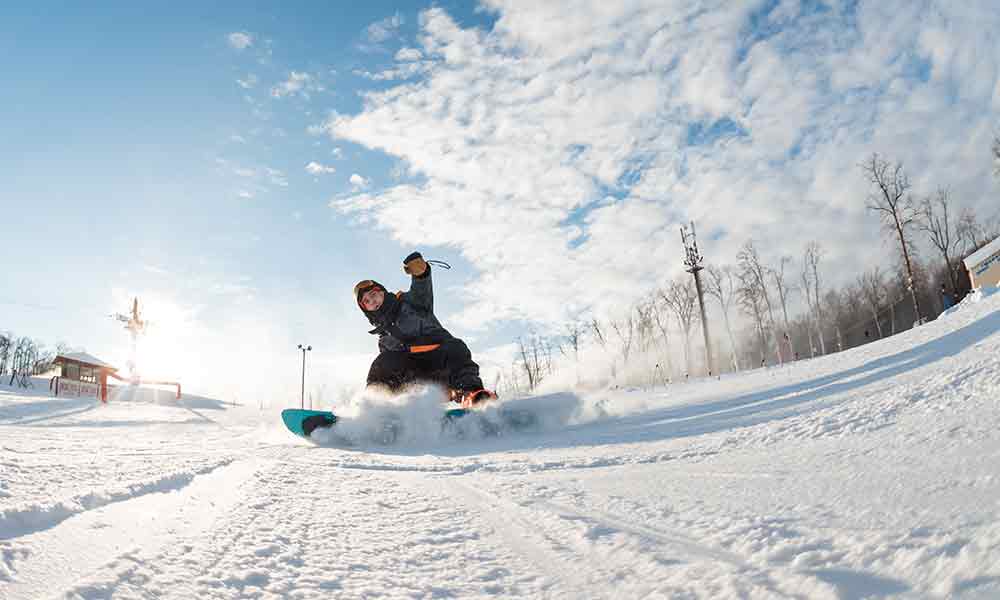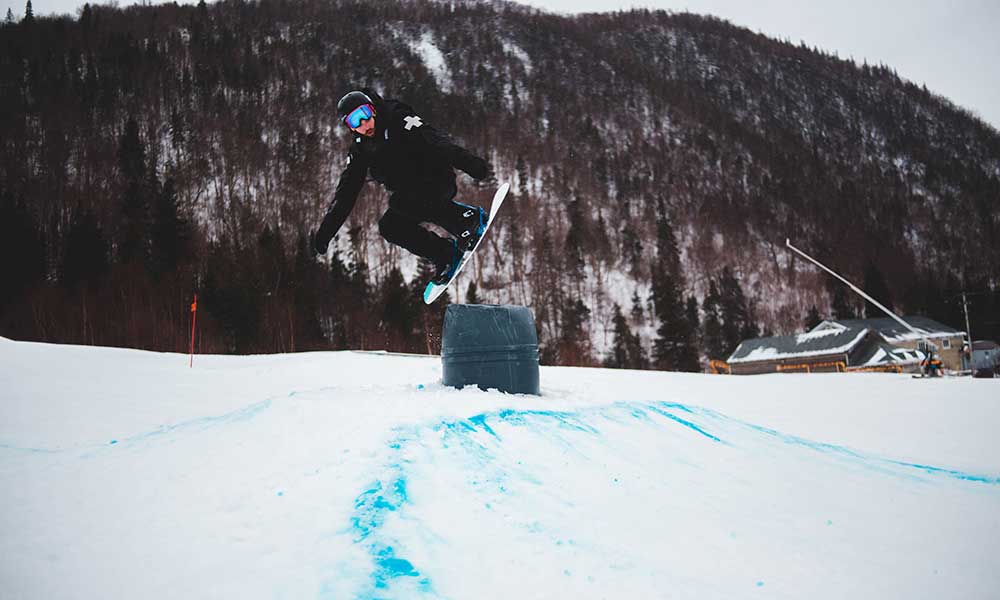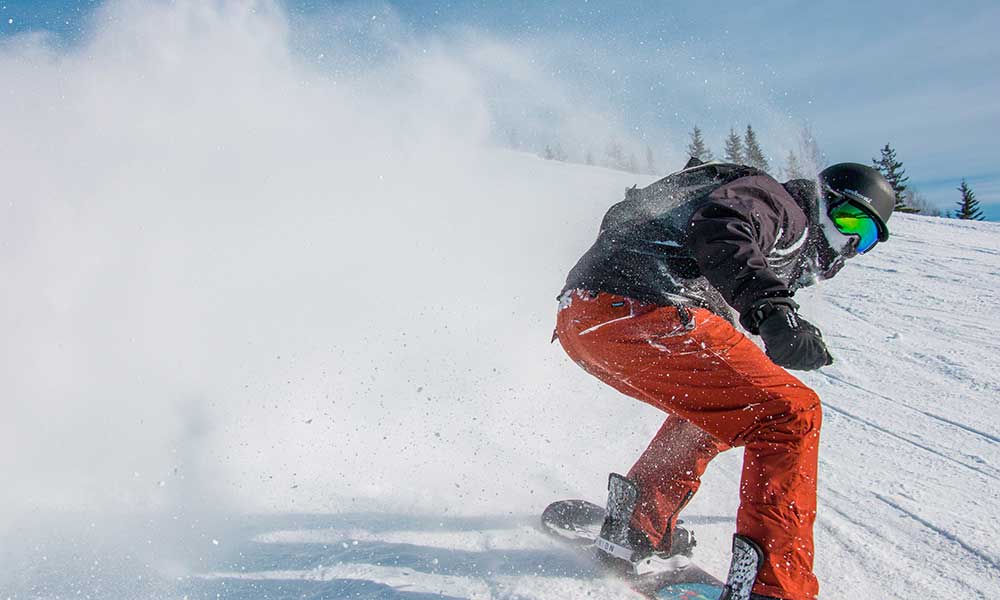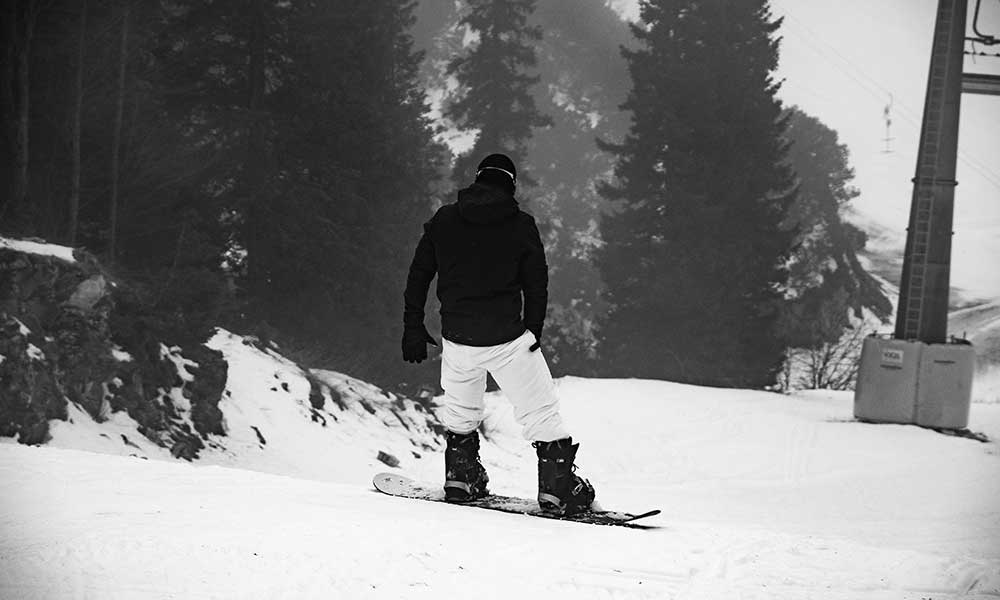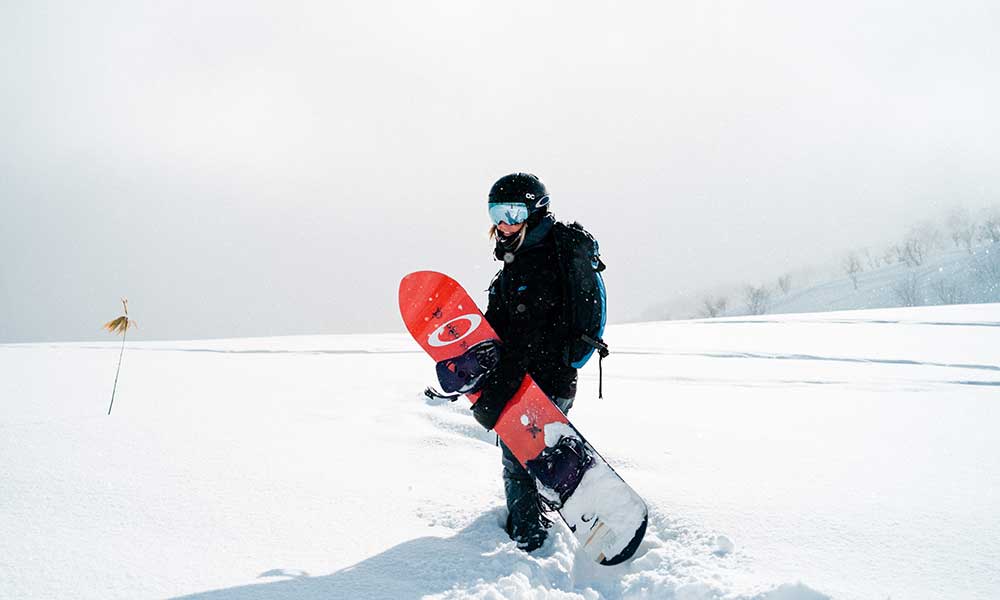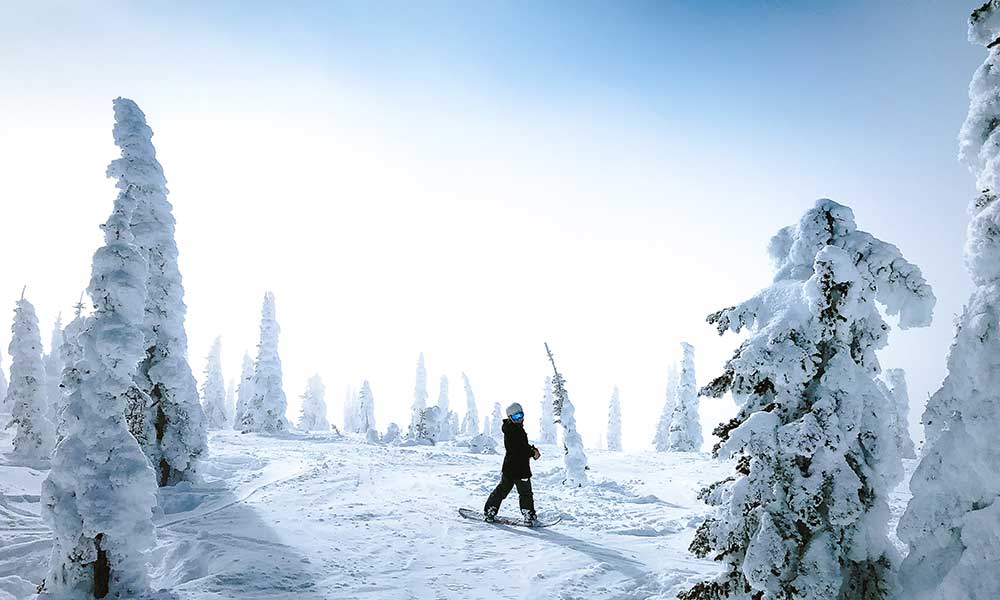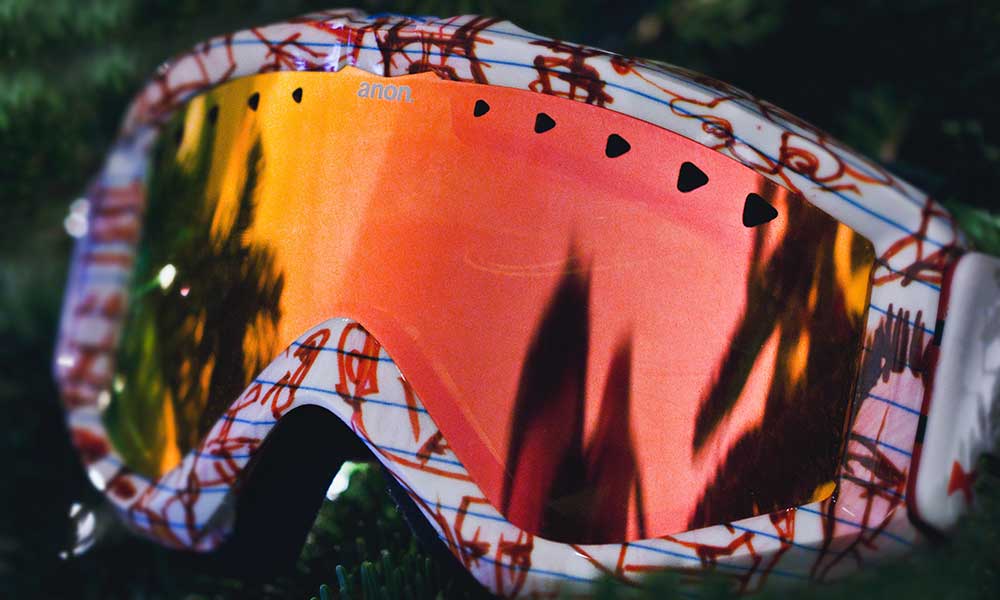One of the first things you should learn as a snowboarder is how to slow down and how to stop.
You’ll learn pretty quickly that toppling face- or butt-first into the snow is the quickest way to halt your descent on the slopes, but there are quicker and easier ways to stop, and ways that don’t hurt your pride or your backside or even your head.
Regardless of the technique, they all involve using the uphill rail of your snowboard and gravity to your advantage.
The Importance Of Controlling Your Speed
The right speed is at the center of any good snowboarding maneuver.
Being able to control your speed, redirect your snowboard and stop on a dime are critical for any rider.
Sliding down mountains on a snowboard is ton of fun and it is not without risks that can show up fast.
Some of them include:
- Maneuvering around a skier or snowboarder who has fallen in front of you.
- Moving around a slower rider.
- Controlling your speed after hitting a patch of ice.
- Controlling your speed after an unexpected and sudden decline the generates more speed.
- Avoiding trees and rocks on your snowboard.
For surfers and skateboarders who are learning to snowboard for the first time, being strapped on a snowboard can be unnerving.
You can’t just step off the snowboard anymore if you want to stop.
It’s a whole new game that you need to learn. So, let’s go do that.
How to Stop on a Snowboard
How do you control your speed when snowboarding?
The edge of your snowboard is key when it comes to controlling your speed and ultimately stopping while snowboarding.
The strips of metal around your snowboard are your edges.
You use the uphill edge to dig into the snow or ice, slowing you down and eventually bringing you to a stop or a more manageable speed.
There are two simple ways to control your speed on your snowboard.
They are essentially the same but the execution is different depending on if your toes are pointing downhill or if your heels are pointing downhill.
When Your Toe Edge Is Your Uphill Edge
As you descend the slope, push your toes down on the edge of your snowboard.
This will force your toe side edge into the snow.
This is how you slow down when your toes favor your uphill edge.
In other words, if your toes are pointing up the mountain, this is how you can slow down and stop on your snowboard.
Don’t push on your toes if they are on your down-hill rail.
You will find your face in the snow faster than you can say, “How did I get face down into the snow?”
When Your Heel Edge Is Your Uphill Edge
When your heels are mostly on the uphill side of your snowboard simply begin to raise your toes into the air so that your heels are pushed down, digging the heel edge of the snowboard into the snow.
Similar with the toe-edge stop, you don’t want to dig your heals in if your heals are down hill.
That would be what is call catching a rail and you will find the back of your head hitting the ground and/or you knees stressed out by the weight of your snowboard as you impact the ground.
The Snow Plow Stop
To perform a snow plow, you need to spin your snowboard horizontally so that the heel-side edge is behind you and you’re staring down the slope.
At this point, simply lean backward and dig that heel-side edge into the snow.
It’s a fast way to stop, but it’s also a quick and sharp maneuver and it can be difficult to maintain balance, so it will take some practice.
The Gravity Stop
The gravity stop is a simple and relatively natural maneuver that essentially changes your direction so that you’re going uphill instead of downhill.
This should be enough to bring you to a full stop on a snowboard.
As you’re sliding downhill, you’ll be moving down and across the slope.
To perform a gravity stop on your snowboard, you just need to adjust so that you’re facing uphill and riding in a similar diagonal manner.
The gravity stop is basically an extension of carving on your snowboard, but instead of redirecting the snowboard down the hill, you continue your carve on a J-shaped trajectory that leads you uphill enough to slow and eventually stop your snowboard.
It requires careful shifting of your balance between front foot and back foot, but if you practice you will get used to it fairly quickly.
Summary: Control Your Speed and Stop
Snowboarding stops don’t just help you to move from a rapid pace to a complete stop.
They also help you to control your speed.
By adjusting the balance on your front foot and back foot, as well as your toes and heels, you can control those high speeds and keep a steady pace.
Think of it in the context of speeding downhill on a skateboard.
You don’t want to go too fast, lest you lose control, and so you use the snowboard or your heel to create friction and slow the snowboard. With snowboard stops, you’re doing the same thing.
As with anything else, practice makes perfect.
You’ll learn how to adjust your feet and body weight, how to tilt your snowboard, and how to gain or reduce that straight line speed.
The type of snowboard stop that you use is down to personal preference, but it’s good to have all of them in your locker just in case.

